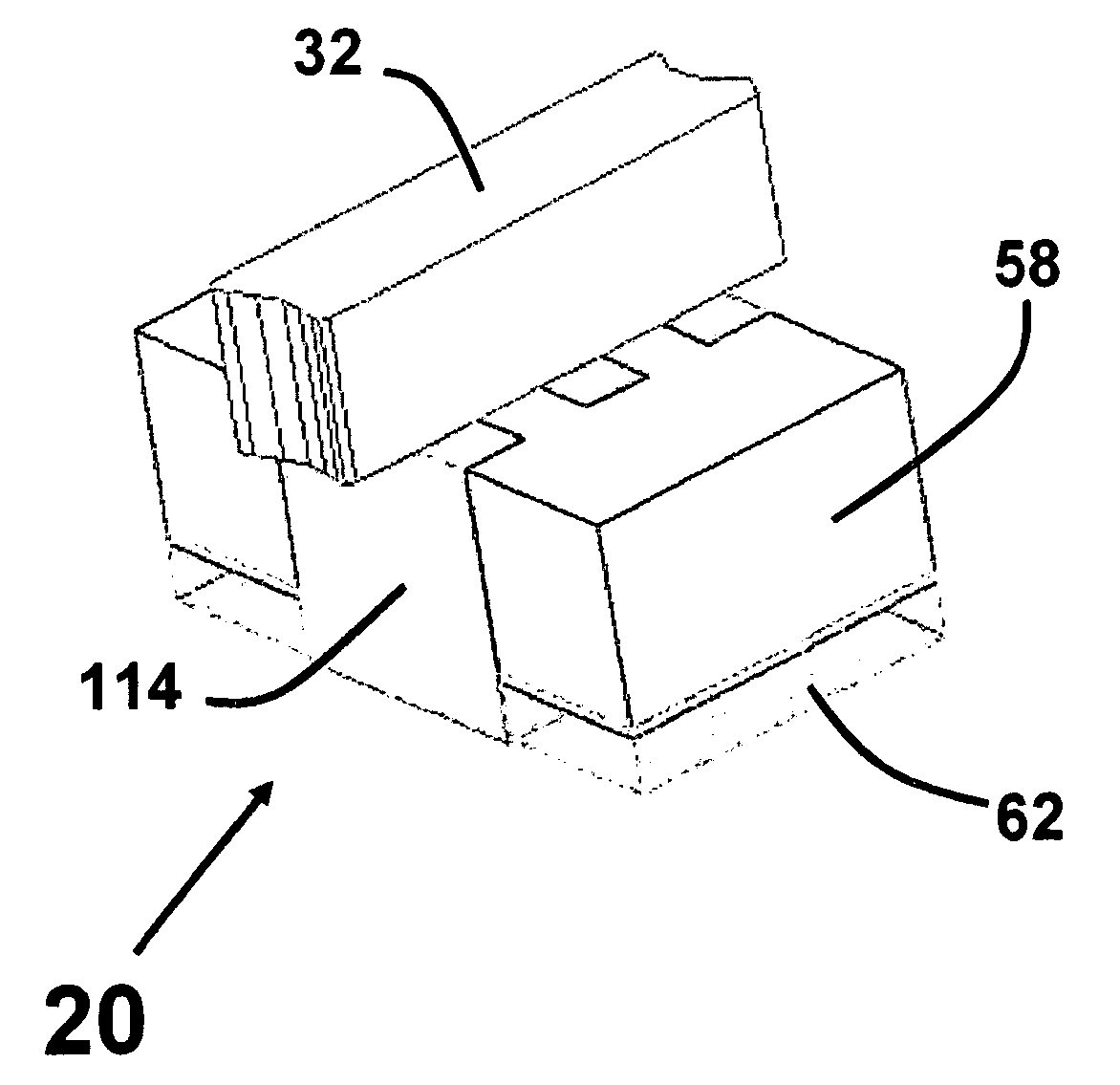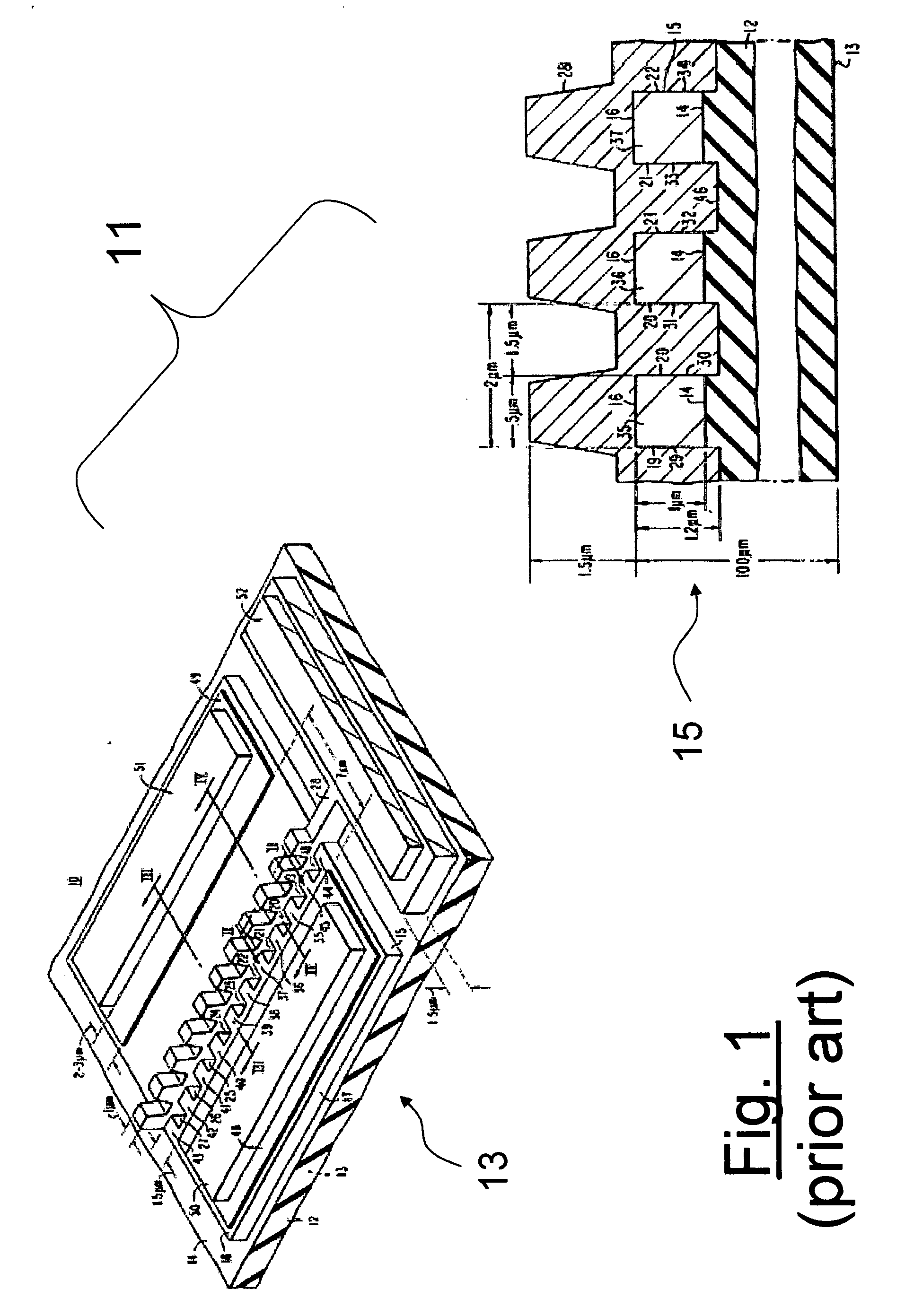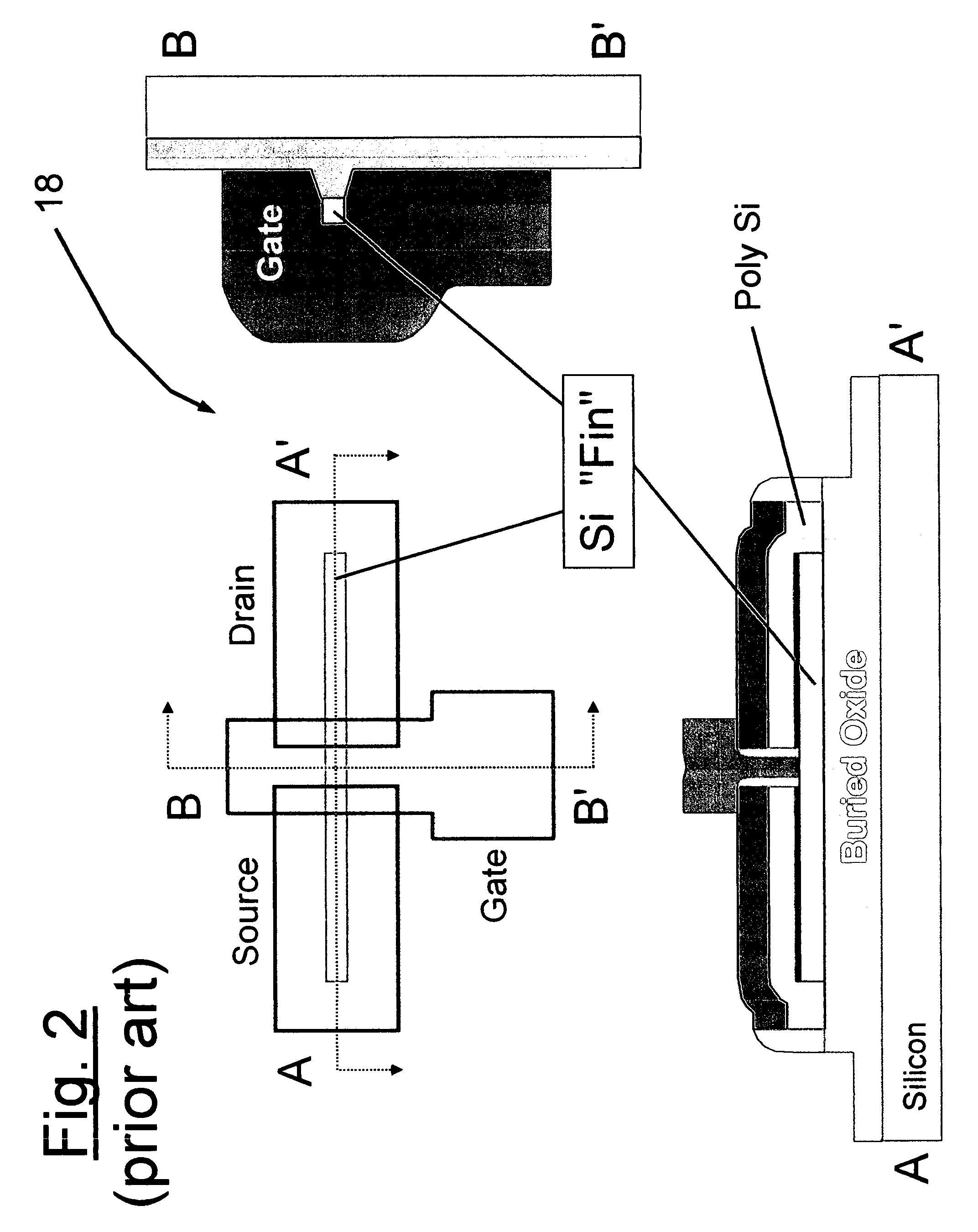Castellated gate MOSFET device capable of fully-depleted operation
a mosfet device and channel structure technology, applied in the field of field effect transistors, can solve the problems of reducing the power consumption of digital functions
- Summary
- Abstract
- Description
- Claims
- Application Information
AI Technical Summary
Benefits of technology
Problems solved by technology
Method used
Image
Examples
embodiment 72
[0066] Depending on the desired device electrical characteristics, the contacts 66 to the source and drain structures 24, 26 may be coincident with the upper silicon surface as illustrated in FIG. 3A, or the contacts 67 (as shown in FIG. 4A) may penetrate into the uppermost impurity layer. For example, surface contacts 66 could result in higher series resistance, which would be beneficial in enhancing ESD characteristics. In the particular example of FIGS. 3 and 3A, the contact masks 70 are laid-out in such a way as to be directly in-line with the conductive channels 22. This approach should provide the least device series resistance, thus improving device performance. Furthermore, it should be understood that additional process steps can be added to the overall fabrication sequence to shut-down the bottom gate. Examples are illustrated in the case of a dual-gate embodiment 72 illustrated in FIGS. 4 and 4A, including the addition of a highly doped “global” buried layer 74, preferabl...
embodiment 78
[0067]FIGS. 5 and 5A illustrate an NMOS device embodiment 78 of the disclosed device invention using a silicon-on-insulator (SOI) starting substrate 80. Note that the device mask layout remains substantially the same as the case of the device 20 with the bulk starting wafer 21 shown in FIGS. 3-3A. Substantially similar to the bulk silicon substrate device 20, the device 78 includes a plurality of thin silicon channel elements 22 that span the distance between a source region 24 and a drain region 26. In the SOI wafer case of the device 78, the device's gate slots 82 can be etched to the same depth as the STI islands 54, 56, that is all the way to the buried oxide 75. However, there are advantages to leaving a common silicon connection 81 in the form of the substrate 21 of FIGS. 3 and 3A at the bottom, thus enabling the use of body contacts which can be employed to eliminate device snapback problems as well as provide a path of higher thermal conductivity with which to dissipate heat...
embodiment 216
[0073]FIGS. 8 and 8A illustrate another embodiment 216 of the present invention wherein the spacer dielectric 114, with its associated thick bottom gate 116, (see FIGS. 3-3A and 6-6B) is omitted. Once again, the device mask layout remains substantially the same as the case of the device 20 with the bulk starting wafer 21 as shown in FIGS. 3-3A. However, now the edges of gate mask 50 are coincident with, or preferably slightly overlap, the gate slot masks 48 in the direction of channel length (Ld), as indicated by line 52. In this embodiment, the gate slot trenches 28 are etched to a first predetermined depth that is typically less than the depth of the Shallow Trench Isolation 54, 56.
[0074] As was the case of device 20 (see FIG. 3A), the outer gate slot masks 34, 36 result in the formation of outmost gate conductor elements which simultaneously penetrate into both the silicon and bounding Shallow Trench Isolation (STI) 54, 64 of the device 216. Dual-polarity source and drain regions...
PUM
 Login to View More
Login to View More Abstract
Description
Claims
Application Information
 Login to View More
Login to View More - R&D
- Intellectual Property
- Life Sciences
- Materials
- Tech Scout
- Unparalleled Data Quality
- Higher Quality Content
- 60% Fewer Hallucinations
Browse by: Latest US Patents, China's latest patents, Technical Efficacy Thesaurus, Application Domain, Technology Topic, Popular Technical Reports.
© 2025 PatSnap. All rights reserved.Legal|Privacy policy|Modern Slavery Act Transparency Statement|Sitemap|About US| Contact US: help@patsnap.com



